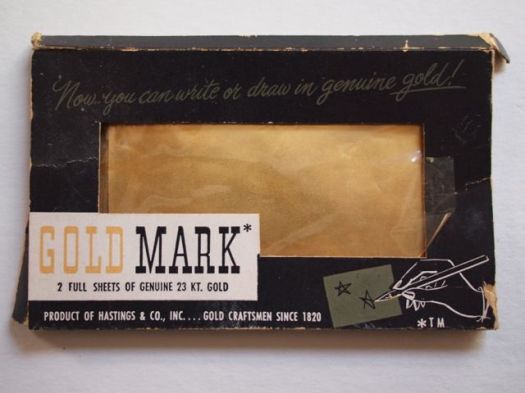Figure 1. Front of the Goldmark Box. Manufactured by Hastings and Co., Inc. [circa. 1940’s-mid 1950’s ?] Note the unregistered trademark and the pretty gold stars that can be made with this product.
.
Figure 2. Front and back of 23k Signature Gold. Chemical Rubber Co. [circa. 1960’s-1970’s?] Note the “Goldmark” registered trademark and the EXCRUCIATINGLY detailed step-by-step instructions.
.
A query on the Guild of Book Workers listserv about pressure sensitive gold foil reminded me that I had an example of this material, and after digging through some boxes, it turned out I had two versions. Nora Lockshin then politely challenged me to describe them a bit. I haven’t found out a lot about them: any other information about pressure sensitive gold foils would be appreciated.
The Hastings & Co. Goldmark foil is likely from before the mid-1950’s, when Hastings was bought by Kurz. The advertising on the back of the box tends to emphasize its use for greeting cards and on wrapping paper. “Now—you can have the luxury of writing or drawing in gold—easy to do and so much fun.” Indeed, it is fun to use and so luxurious to write in genuine gold. The advertising also mentions that the marks will not smudge on paper, but a coat of nail polish should be used to seal it on wood, metal or glass. Kurz still manufactures hot stamping foils, many of which I use and like quite a bit. Of particular interest to bookbinding historians is that in 1931 Kurz invented a vapor deposit stamping foil with real gold, used for hot stamping. Middleton, in A History of English Craft Bookbinding Technique dates the invention of real gold foil in England to 1933. (p. 186) It is unknown when the earliest pressure sensitive foil was developed.
Chemical Rubber Company (CRC) foil packaging suggests it can be used for personalizing and identifying books, wallets, etc. The CRC foil packaging sports a clever design, since the wrapper also forms a clear window that is used while writing, to prevent tearing through the thinner foil. The CRC began in 1900, when Arthur Freidman invented and sold a chemical resistant rubber apron for use by chemistry students. Later he and his brothers published the first Handbook of Chemistry in 1913: it is still in print, currently the 92nd. ed. The original 1913 edition is described as “apron-pocket size”, the current edition is considerably larger, perhaps necessitating a kangaroo sized pouch.
Both of these pressure sensitive gold foils have a similar thin film backing, a layer of gold, and an unidentified adhesive. The Hastings gold has a much more matt appearance, while the signature gold is quite shiny. Both have a bluish-green color when viewed through transmitted light, which indicates genuine gold. Curiously, the Hastings box does not contain a registered trademark, while the CRC gold does: both claim the name Goldmark. Did Hastings make both of these, or was there a trademark dispute with different companies trying to use the Goldmark name?
By the way, both of these pressure sensitive foils still work quite well.
Figure 3. Three gold stars made with 23k Signature Gold by the author.



